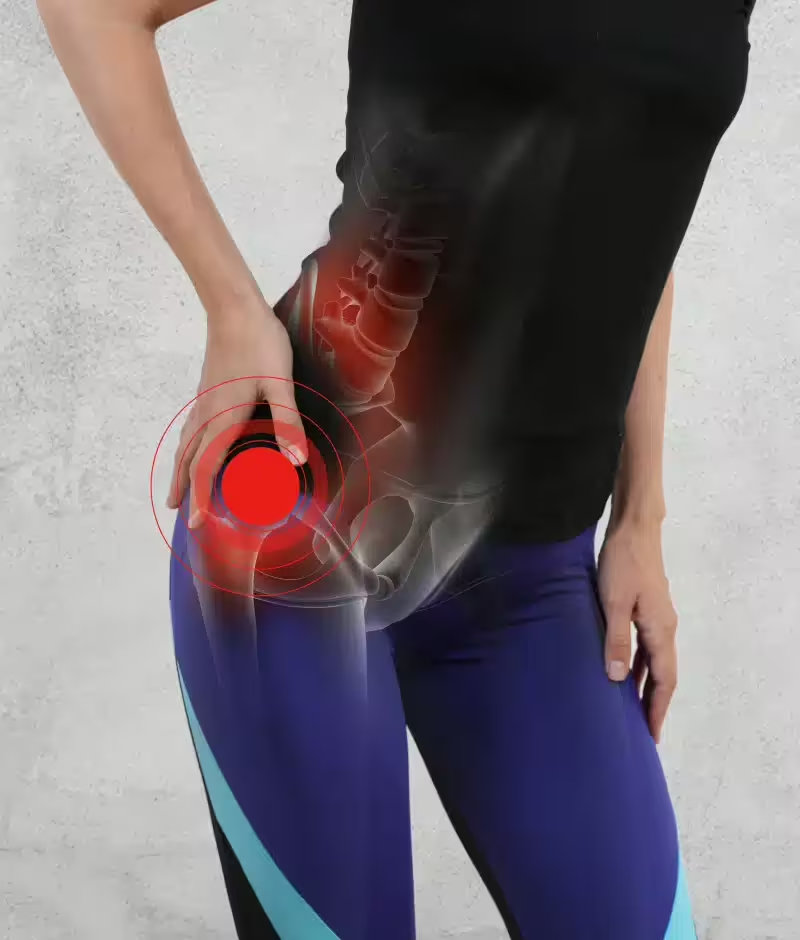Hip misalignment is a common physical problem that can cause a lot of pain and discomfort. It occurs when a disruption occurs between the hip socket and head. This can have various causes such as trauma, poor posture and improper movement.
A skewed hip position can lead to changes in the spine and pelvis and can also cause pain in the lower back, knees and ankles. So a variety of other problems can arise as a result of the hip’s abnormal position.
It is important to understand how hip misalignment occurs and how it can be treated and prevented. In this article, we discuss the causes, symptoms and treatment methods by a chiropractor of hip misalignment.

What causes a skewed hip position?
Curvature of the hip can be caused by several factors, including injury, osteoarthritis, improper posture and movement, muscle or joint disorders and pregnancy. Another cause may be pelvic misalignment. A skewed hip position is closely related to a skewed pelvis because the hip socket attaches to the pelvis.
With pelvic tilt, one side of the pelvis is lower than the other. This can lead to various symptoms, such as low back pain, headaches, neck pain and pelvic pain. A pelvic tilt means the pelvis is not stable or tilts to one side. This can happen when a severely cramped muscle pulls on one side of the pelvis, pulling the pelvis upward. As a result, both sides of the pelvis are not at the same height and the pelvis is less stable.
This difference in height, or instability, can be felt during activities such as sitting or walking. This can lead to symptoms in other parts of the body. The body adopts a different posture to compensate for the effects of pelvic misalignment, just as it does with hip misalignment. Unfortunately, this compensating in itself has negative effects on the body. The body brings other parts out of balance causing a chain reaction.
What are the symptoms of a skewed hip position?
If you suffer from a skewed hip position, the symptoms mainly come from the compensatory behavior the body has begun to exhibit. This may manifest itself in a different position of the legs or spine. Other symptoms include pain and stiffness in the hip, back, knee or ankle, difficulty walking, moving or sleeping and a crooked posture or abnormal gait.
Therefore, we first map out all the factors involved in the symptoms so that we can get a holistic picture of your health.
We start with an intake interview before a treatment plan can be drawn up. Here we will discuss your symptoms based on an interview and use a physical examination to determine the position of the hip.

The examination and treatment by a chiropractor
Various tests are used to see which recovery method is best for you. That way, a treatment plan can be tailored to your needs and goals. A chiropractor can correct a skewed hip position by, among other things:
- Treat the muscles and joints of the pelvis, back and hip.
- Performing muscle strengthening and stabilizing exercises.
- Improving posture through specific modifications.
- Treating any underlying conditions, such as pelvic misalignment or scoliosis.
- Providing exercises and stretch routines for at home.
Preventive measures such as regular exercise, good posture and wearing comfortable shoes can help prevent hip misalignment. It is important to take action at the first signs of hip misalignment to prevent complications and further symptoms.
What can TOPCHIRO do for you?
Disorders of the hip and pelvis can cause many complaints. Do you recognize yourself in the symptom picture outlined? Then contact us to make an appointment.
We would like to help you get back to your daily activities as soon as possible without complaints.
